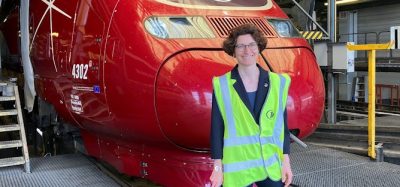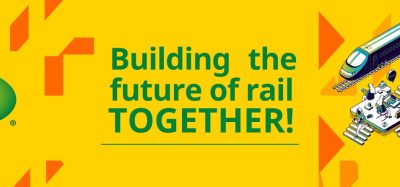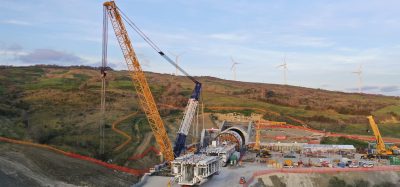High-speed rail is the future of train travel in Russia
Posted: 19 September 2014 | | No comments yet
Russia is the world’s largest country and it has one of the largest rail networks at 85,300km. The Trans-Siberian Railway alone – connecting Moscow with the Far Eastern port of Vladivostok – is over 9,200km-long. Obviously, a well-developed transportation system is needed. Alexander Misharin – First Vice-President of Russian Railways – discusses the next stage of development of railway infrastructure in Russia – the important construction of high-speed lines.
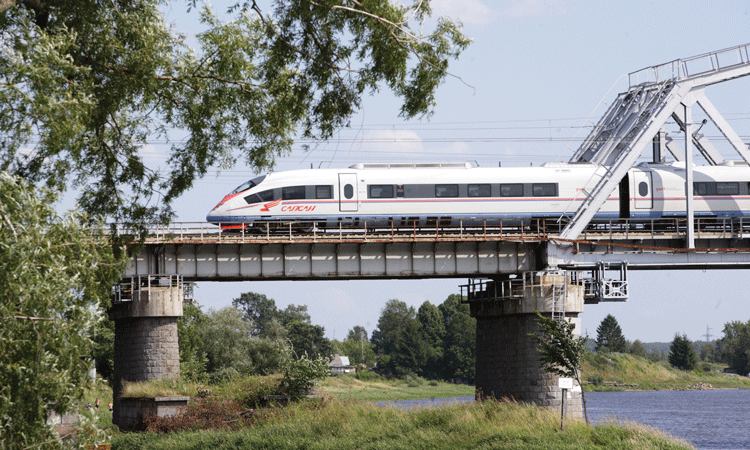

These days, people strive to make every moment count; they cannot afford to spend a lot of time on the road. No modern company has the luxury of standing still, stopping growth, or ignoring its customers, whether they are passengers or shippers. Therefore, one of the strategic focuses of Russian Railways is the construction of high-speed rail.
Not a new idea
High-speed rail in Russia is not a new idea. By the second half of the 19th century, Russia was considered the world’s rail superpower – not just due to its constantly growing network of railways, but also due to the speed of its trains. In the early 20th century, express trains between Moscow and St. Petersburg reached 110km/h. In the 1960s, Aurora, the fastest passenger train, had a top speed of 160km/h. Today, the fastest passenger train is Sapsan, but the path from Aurora to Sapsan was a difficult one.
In the 1960s and 1970s, Soviet researchers studied the possibility of qualitatively improving passenger facilities, and even in that era they came to the conclusion that it was necessary to build dedicated passenger lines, primarily from Moscow to the Caucasus and Crimea. However, the speed mentioned at that time was 250km/h. The rationale for the project was recognised by the Ministry of Railways, but it was not economically feasible to build such lines.
Later in the Soviet Union, and then in post-Soviet Russia, the idea was broached again on different occasions. However, real results are possible only now. After being founded in 2003, Russian Railways, along with the Ministry of Transport, decided to resume the high-speed rail project. In 2006, JSC ‘High-Speed Rail Lines’ was created as a subsidiary of Russian Railways. This was the first step.
On 17 December 2009, the first high-speed trains travelled between Moscow and St. Petersburg; its passengers enjoyed the overall speed and comfort of the new trains, which travelled 650km in less than three hours. The next summer, Sapsan trains were put into operation on the Moscow–Nizhny Novgorod route. Also in 2010, the high-speed Allegro train connected St. Petersburg with Helsinki (Finland).
High-speed popularity
High-speed trains immediately became popular among passengers – they were filled almost to 100% capacity. To meet the demand for such trains, Russian Railways ordered another batch of Sapsans from Siemens. One important feature of the new trains is the presence of motion-function dual formulations. This will significantly increase their carrying capacity without increasing the number of trains.
Each 10-car Sapsan train is 250m-long, and it is designed for 604 passengers. In dual mode, 20-cars can transport 1,208 passengers. Each train has two
additional first class and VIP zones for increased comfort. All the cars are equipped with Wi-Fi.
The first phase is over, but the pace of modern life is constantly accelerating, and it demands that all sectors of the economy, including transport, keep up
Therefore, the next stage of develop ment of railway infrastructure in Russia will be high-speed lines. This is reflected in the ‘Strategy for the Development of Railway Transport of the Russian Federation by 2030’, which was approved by the Russian Government in 2008.
On 16 March 2010, President Dmitry Medvedev signed the decree ‘On Measures for the Organisation of High-Speed Railways in Russia’. In 2011, specialists from Russian Railways developed a plan for the modernisation and development of railway infrastructure, including the construction of dedicated high-speed lines.
When it comes to high-speed rail, Russian Railways sees it as improving transport links between major cities and regions of the country and improving mobility. This entails bringing modern technology to the development of railway infrastructure, garnering additional revenue due to the increase in passengers, and freeing-up existing infrastructure for commuter and high-speed container transport.
Economic calculations have shown that Moscow–St. Petersburg; Moscow–Nizhny Novgorod–Kazan–Yekaterinburg, connecting Perm, Ufa, and Chelyabinsk, and Moscow–Rostov-on-Don–Adler, connecting towns in the region, are promising routes for high-speed lines. These projects will provide high-speed transportation to more than 100 million citizens living in the gravity zones of the railways.
High-speed lines will connect practically all major metropolitan areas to the northwest, south, and east of Moscow within 300 miles of each other. At such
distances, aviation is time-consuming, and only high-speed trains can get passengers to their destinations within an hour or two; this helps to develop cities and combine them into a single transportation system.
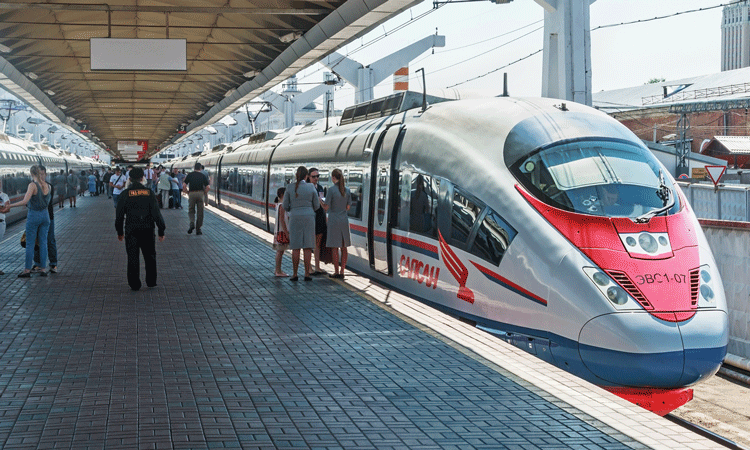

High-speed rail is popular in Russia
It was decided to first build the Moscow–Kazan line, which will run through seven regions of the Russian Federation: Moscow; Moscow, Vladimir, and Nizhny
Novgorod oblasts; Chuvash Republic; the Republic of Mari El; and the Republic of Tatarstan. The further development of the line will extend it to Yekaterinburg.
The length of the Moscow–Kazan line will be approximately 770km, trains will travel up to 400km/h, and there will be stops every 50-70km. Travelling from Moscow to Kazan will take 3.5 hours; 1 hour from Nizhny Novgorod to Cheboksary; and 1.5 hours to Kazan. According to experts, the annual ridership on the line will reach 10.5 million people by 2020.
The Moscow–Vladimir–Nizhny Novgorod–Kazan high-speed line, designed for trains with speeds reaching 400km/h, was included in the Scheme of Territorial Planning of the Russian Federation in late-March 2014. This document plans for the construction and reconstruction of Kursky station in Moscow (a total area of 49,100m2), Moskovsky railway station in Nizhny Novgorod (32,700m2), Terminal-2 Kazan in Kazan (10,800m2), nine railway stations (Noginsk HSL, Orekhovo-Zuevo HSL, Petushki HSL, Vladimir HSL, Kovrov HSL, Dzerzhinsk HSL, Airport HSL, Cheboksary HSL, and Pomary HSL), three passing stations,
and 17 dispatching points.
Audit results
In May 2014, the results from the audit and price-feasibility study for the construction of the first high-speed rail line in Russia were presented to the public at the St. Petersburg International Economic Forum. Russian and international auditors confirmed the stated cost of the construction of the Moscow–Kazan line at 1.6 trillion rubles ($4.74 billion), which includes a government investment of around 380 billion rubles ($11.26 million). Oliver Pitz, the CEO of DB International GmbH, announced the results of the technical audit of the project and confirmed its compliance with international standards.
There is no doubt that the construction of high-speed rail will improve people’s standard of living. The Moscow–Ekaterinburg high-speed line will connect cities in the European part of Russia, affecting a total population of over 20 million – about 35 million people if the suburbs are included in this tally – giving
them new opportunities. The creation of dedicated infrastructure for fast and high-speed rail will not only increase the mobility of the population, but also
free-up track for freight.
The construction of high-speed lines is popular in Russia. According to the Russia Public Opinion Research Center (VCIOM), its development is supported
by 85% of local residents in areas hosting the high-speed lines.
In Russia as a whole, according to surveys by VCIOM, trains are the preferred mode of transport: they are used by 38% of Russians; 30% prefer long-distance buses, 25% prefer cars, and 7% prefer airplanes. In areas that will be affected by high-speed rail, people prefer travelling by train: almost 64% of the inhabitants of these regions use the train. The main reasons Russians choose to travel by trains are affordability, comfort, and environmental friendliness.






